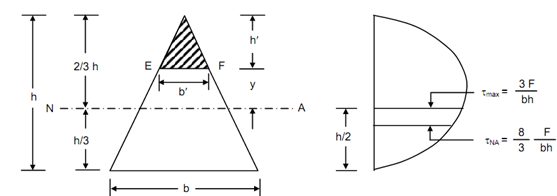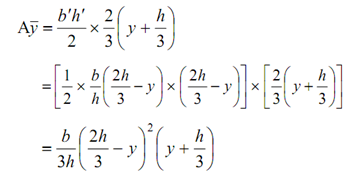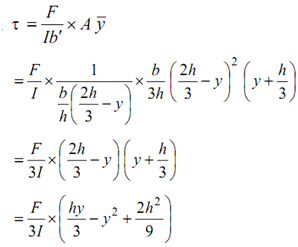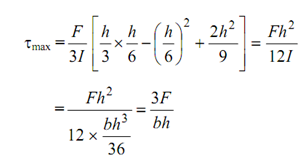Shear Stress Distribution into Triangular Section:
Let us assume a triangle of base b and h. Its centroid is at a distance h/3 from the base.

Beam Cross-section Shear Stress Distribution
Figure
Assume the shear stress at the plane EF, at a distance y from the neutral axis be q.
Assume b′ & h′ be the width & height of the triangle above the plane EF.
From same triangles,
b / b′= h/ h′
b′ = bh′ / h
h′ = ((2/3) h - y )
b′ = (b/ h) ( (2/3) h - y )
Centroid of the triangle above the plane EF, through the neutral axis = ( y +( h′ /3 ))
On putting the value of h′ = y + (1/3)((2/3)h - y ) =(2/3)(y+(h/3))
Moment of this triangular area around the neutral axis,

∴ Shear Stress,

For shear stress τ to be maximum, dt / dy = 0 ,
((h /3) - 2 y = 0
∴ y = h/6
The height through the base of the triangle is
h/ 3+ h/6 = h/2
∴ Maximum shear stress is at particular distance h/2 through the base of the triangle, that is also at a distance of h/6 from the centroidal axis.
Putting y = h/ 6 in the equation for the shear stress, we achieved,

The shear stress at the neutral axis, that means y = 0, is as follows :
τNA = (F /3I ) (2h2/9)= 2Fh 2/27I
=2Fh2/(27 × (bh3/36) = (8/3) ×(F/bh)
The shear stress distribution diagram might be seen in Figure.